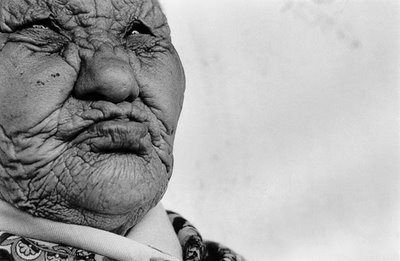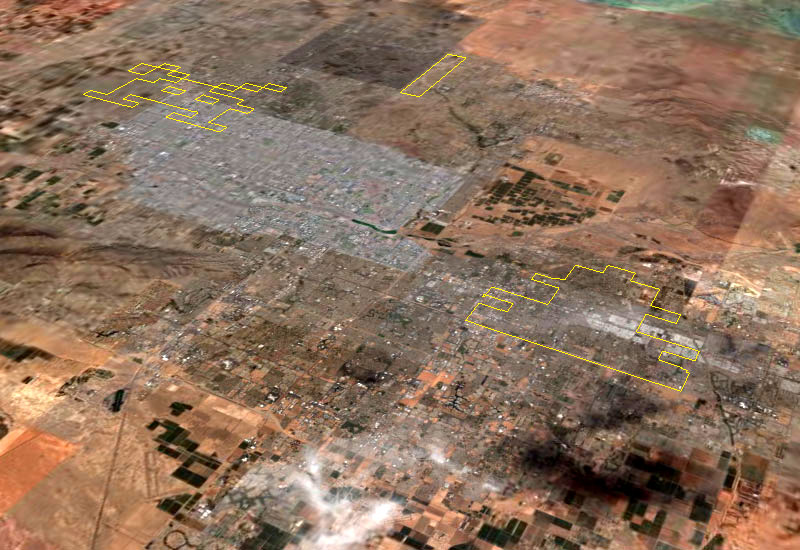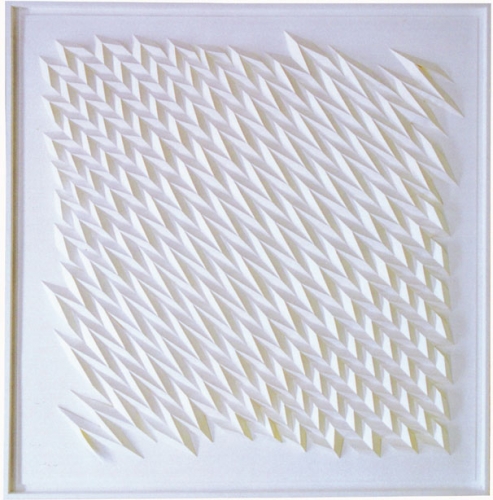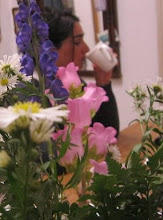from the Websters Unabridged Dictionary 1913:
Mooned
(Mooned) a. Of or resembling the moon; symbolized by the moon. "Sharpening in mooned horns." "Mooned Ashtaroth." Milton.
Mooner
(Moon"er) n. One who abstractedly wanders or gazes about, as if moonstruck. [R.] Dickens.
Moonery
(Moon"er*y) n. Conduct of one who moons. [R.]
Moonet
(Moon"et) n. A little moon. [R.] Bp. Hall.
Moon-eye
(Moon"-eye`) n.
1. A eye affected by the moon; also, a disease in the eye of a horse.
2. (Zoצl.) (a) Any species of American fresh-water fishes of the genus Hyodon, esp. H. tergisus of the Great Lakes and adjacent waters. (b) The cisco.
Moon-eyed
(Moon"-eyed`) a. Having eyes affected by the moon; moonblind; dim-eyed; purblind.
Moon-faced
(Moon"-faced`) a. Having a round, full face.
Moonfish
(Moon"fish`) n. (Zoצl.) (a) An American marine fish (Vomer setipennis); — called also bluntnosed shiner, horsefish, and sunfish. (b) A broad, thin, silvery marine fish (Selene vomer); — called also lookdown, and silver moonfish. (c) The mola. See Sunfish, 1.
Moonflower
(Moon"flow`er) n. (Bot.) (a) The oxeye daisy; — called also moon daisy. (b) A kind of morning glory (Ipomœa Bona-nox) with large white flowers opening at night.
Moong
(Moong) n. (Bot.) Same as Mung.
Moonglade
(Moon"glade`) n. The bright reflection of the moon's light on an expanse of water. [Poetic]
Moonie
(Moo"nie) n. (Zoצl.) The European goldcrest.
Moonish
(Moon"ish) a. Like the moon; variable.
Being but a moonish youth.
Shak.
Moonless
(Moon"less), a. Being without a moon or moonlight.
Moonlight
(Moon`light`) n. The light of the moon. — a. Occurring during or by moonlight; characterized by moonlight.
Moonling
(Moon"ling) n. A simpleton; a lunatic. [Obs.]
Moonlit
(Moon"lit`) a. Illumined by the moon. "The moonlit sea." Moore. "Moonlit dells." Lowell.
Moonraker
(Moon"rak`er) n. (Naut.) Same as Moonsail.
Moonrise
(Moon"rise`) n. The rising of the moon above the horizon; also, the time of its rising.
Moonsail
(Moon"sail`) n. (Naut.) A sail sometimes carried in light winds, above a skysail. R. H. Dana, Jr.
Moonseed
(Moon"seed`) n. (Bot.) A climbing plant of the genus Menispermum; — so called from the crescentlike form of the seeds.
Moonset
(Moon"set`) n. The descent of the moon below the horizon; also, the time when the moon sets.
Moonshee
(Moon"shee) n. [Hind. munishi, fr. Ar. munishi a writer, author, secretary, tutor.] A Mohammedan professor or teacher of language. [India]
Moonshine
(Moon"shine`) n.
1. The light of the moon.
2. Hence, show without substance or reality.
3. A month. [R.] Shak.
4. A preparation of eggs for food. [Obs.]
Moonshine
(Moon"shine`), a. Moonlight. [R.] Clarendon.
Moonshiner
(Moon"shin`er) n. A person engaged in illicit distilling; — so called because the work is largely done at night. [Cant, U.S.]
Moonshiny
(Moon"shin`y) a. Moonlight. [Colloq.]
I went to see them in a moonshiny night.
Addison.
Moonstone
(Moon"stone`) n. (Min.) A nearly pellucid variety of feldspar, showing pearly or opaline reflections from within. It is used as a gem. The best specimens come from Ceylon.
Moonstricken
(Moon"strick`en) a. See Moonstruck.
Moonstruck
(Moon"struck`) a.
1. Mentally affected or deranged by the supposed influence of the moon; lunatic.
2. Produced by the supposed influence of the moon. "Moonstruck madness." Milton.
3. Made sick by the supposed influence of the moon, as a human being; made unsuitable for food, as fishes, by such supposed influence.
Moonwort
(Moon"wort`) n. (Bot.) (a) The herb lunary or honesty. See Honesty. (b) Any fern of the genus Botrychium, esp. B. Lunaria; — so named from the crescent-shaped segments of its frond.
Moony
(Moon"y) a.
1. Of or pertaining to the moon.
Soft and pale as the moony beam.
J. R. Drake.
2. Furnished with a moon; bearing a crescent.
But soon the miscreant moony host
Before the victor cross shall fly.
Fenton.
3. Silly; weakly sentimental. [Colloq.] G. Eliot.
*

















 Phil Borges,
Phil Borges,
 embrace 7
embrace 7
 embrace 2
embrace 2



 SKY PAPE.
SKY PAPE.  SKY PAPE.
SKY PAPE. 













 Michael Shanks, Bamburgh, Northumberland
Michael Shanks, Bamburgh, Northumberland

 view
view  photo
photo 
 Michele Turre - map of Cambridge and its Watershed
"Eurocentrism, like Renaissance perspectives in painting, envisions the world from a single privileged point. . . . Eurocentrism bifurcates the world into the "West and the Rest" and organizes everyday language into binaristic heirarchies implicitly flattering to Europe: our 'nations,' their 'tribes'; our 'religions,' their 'superstitions'; our 'culture,' their 'folklore'; our 'art,' their 'artifacts'; our 'demonstrations,' their 'riots'; our 'defense,' their 'terrorism.' " Shohat, Ella and Robert Stam. Unthinking Eurocentrism. Routledge. London and New York, 1994. p.2
"Maps made it easy for European states to carve up Africa and other heathen lands, to lay claim to land and rsources, and to ignore existing social and political structure. Knowledge is power and crude explorers' maps made possible treaties between nations with conflicting claims. That maps drawn up by diplomats and generals became a political reality lends an unintended irony to the aphorism that the pen is mightier than the sword." Monmonier, Mark. How to Lie with Maps. University of Chicago Press. Chicago and London, 1991.
"Aboriginal maps can only be properly read or understood by the initiated, since some of the information they contain is secret. This secrecy concerns the ways in which the map is linked to the whole body of knowledge that constitutes Aboriginal culture. For Aborigines, the acquisition of knowledge is a slow ritualized process of becoming initiated in the power-knowledge network, essentially a process open only to those who have passed through the earlier stages. By contrast, the Western knowledge system has the appearance of being open to all, in that nothing is secret. . . . In the Western tradition the way to imbue a claim with authority is to attempt to eradicate all signs of its local, contingent, social and individual production."
"In the light of these considerations we should perhaps recognize that all maps, and indeed all representations, can be related to experience and instead of rating them in terms of accuracy or scienticity we should consider only their "workability" -- how successful they are in achieving the aims for which they were drawn. . . ."
David Turnbull in Denis Wood, The Power of MapsThe Guldford Press. New York and London, 1992. p.40.
Michele Turre - map of Cambridge and its Watershed
"Eurocentrism, like Renaissance perspectives in painting, envisions the world from a single privileged point. . . . Eurocentrism bifurcates the world into the "West and the Rest" and organizes everyday language into binaristic heirarchies implicitly flattering to Europe: our 'nations,' their 'tribes'; our 'religions,' their 'superstitions'; our 'culture,' their 'folklore'; our 'art,' their 'artifacts'; our 'demonstrations,' their 'riots'; our 'defense,' their 'terrorism.' " Shohat, Ella and Robert Stam. Unthinking Eurocentrism. Routledge. London and New York, 1994. p.2
"Maps made it easy for European states to carve up Africa and other heathen lands, to lay claim to land and rsources, and to ignore existing social and political structure. Knowledge is power and crude explorers' maps made possible treaties between nations with conflicting claims. That maps drawn up by diplomats and generals became a political reality lends an unintended irony to the aphorism that the pen is mightier than the sword." Monmonier, Mark. How to Lie with Maps. University of Chicago Press. Chicago and London, 1991.
"Aboriginal maps can only be properly read or understood by the initiated, since some of the information they contain is secret. This secrecy concerns the ways in which the map is linked to the whole body of knowledge that constitutes Aboriginal culture. For Aborigines, the acquisition of knowledge is a slow ritualized process of becoming initiated in the power-knowledge network, essentially a process open only to those who have passed through the earlier stages. By contrast, the Western knowledge system has the appearance of being open to all, in that nothing is secret. . . . In the Western tradition the way to imbue a claim with authority is to attempt to eradicate all signs of its local, contingent, social and individual production."
"In the light of these considerations we should perhaps recognize that all maps, and indeed all representations, can be related to experience and instead of rating them in terms of accuracy or scienticity we should consider only their "workability" -- how successful they are in achieving the aims for which they were drawn. . . ."
David Turnbull in Denis Wood, The Power of MapsThe Guldford Press. New York and London, 1992. p.40.



